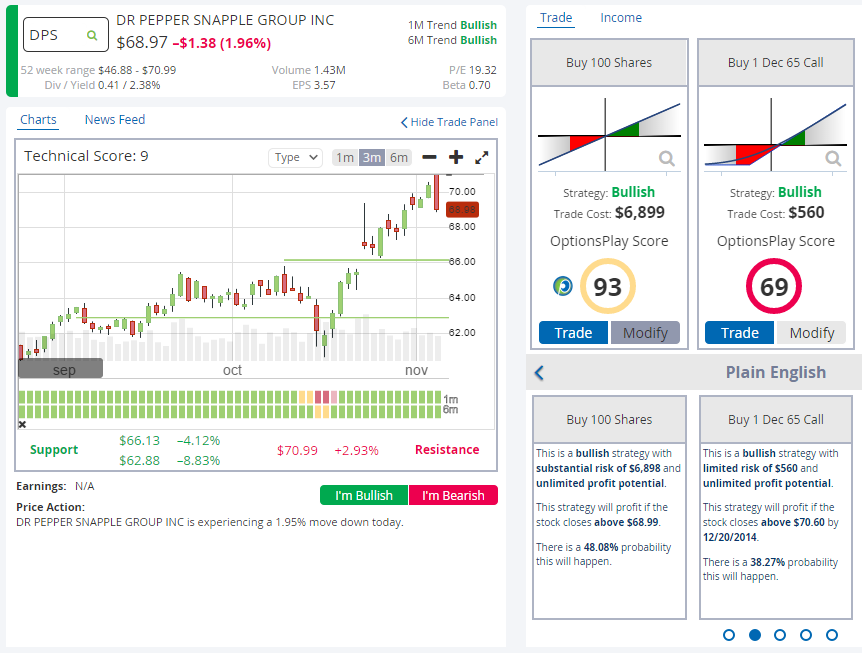Buying Stocks vs. Calls, Which is better?
You’ve been in this situation before: you’re bullish on a stock, but can’t decide if makes more sense to buy the call or just purchase shares. Many traders wrestle with this, and for good reason.
On the surface, buying the call will always seem like the smarter trade. For starters, it’s significantly cheaper than buying 100 shares of stock. If you’re right and the stock goes on a run, you’ll earn a higher return; and if you’re wrong, your downside risk is capped. Sounds like a no-brainer, right? Always buy the call!
But not so fast. What if the spread between the bid and ask on the call is too large? What if the option has poor liquidity, or if its implied volatility is too rich? If any of these are true, then buying stock may be the smarter trade.
For context, let’s look at Dr. Pepper Snapple Group (DPS). It’s a very strong stock that’s had a great rally in this bull market. Let’s break down our choices for making a bullish trade:
- Buying 100 shares (currently trading at $69) would cost roughly $6,900.
- Buying an at-the-money December 65 call that expires in 45 days costs only $560. That’s less than 10% of the shares.
When analyzing stock purchases, the risk and reward is straightforward: for every dollar the stock goes up, I make $100, and I lose $100 for every dollar it goes down.
Analyzing the call is a different story. Buying the call gives me unlimited upside potential and limited downside protection. But my breakeven price and time are factors now. In the case of the DPS 65 call, the stock has to move past $65, plus the premium I paid for the call within 45 days for the trade to be profitable. There is no easy way to quickly determine if the risk/reward in that case is worth it.
That’s why we created the OptionsPlay Score. This score is a probability-weighted risk/reward ratio that lets you determine whether or not a trade is worth making. We factor in the upside, downside, and the probability of profit for each scenario. The higher the score, the more favorable the ratio. You could think of it as a common denominator between different trading strategies that lets you compare and evaluate each one fairly.
My favorite part about the OptionsPlay Score is when it warns me not to make the options trade. The reality of options trading is that many times, the options just don’t make sense. When I was evaluating DPS months ago, the OptionsPlay Score was lower for the call option than the stock. As you can see, I’m glad I took the advice.
– Tony Zhang








Share this on